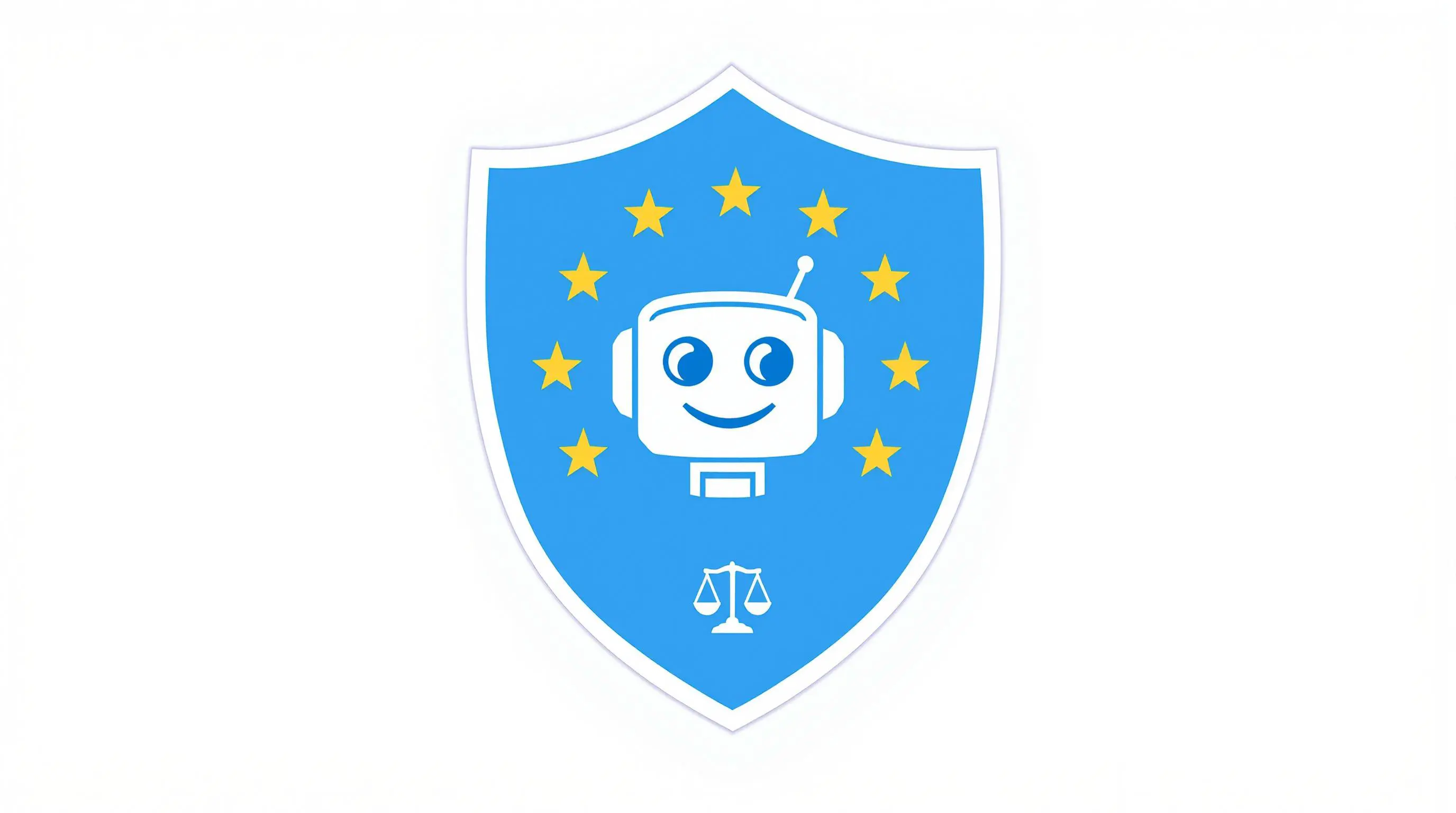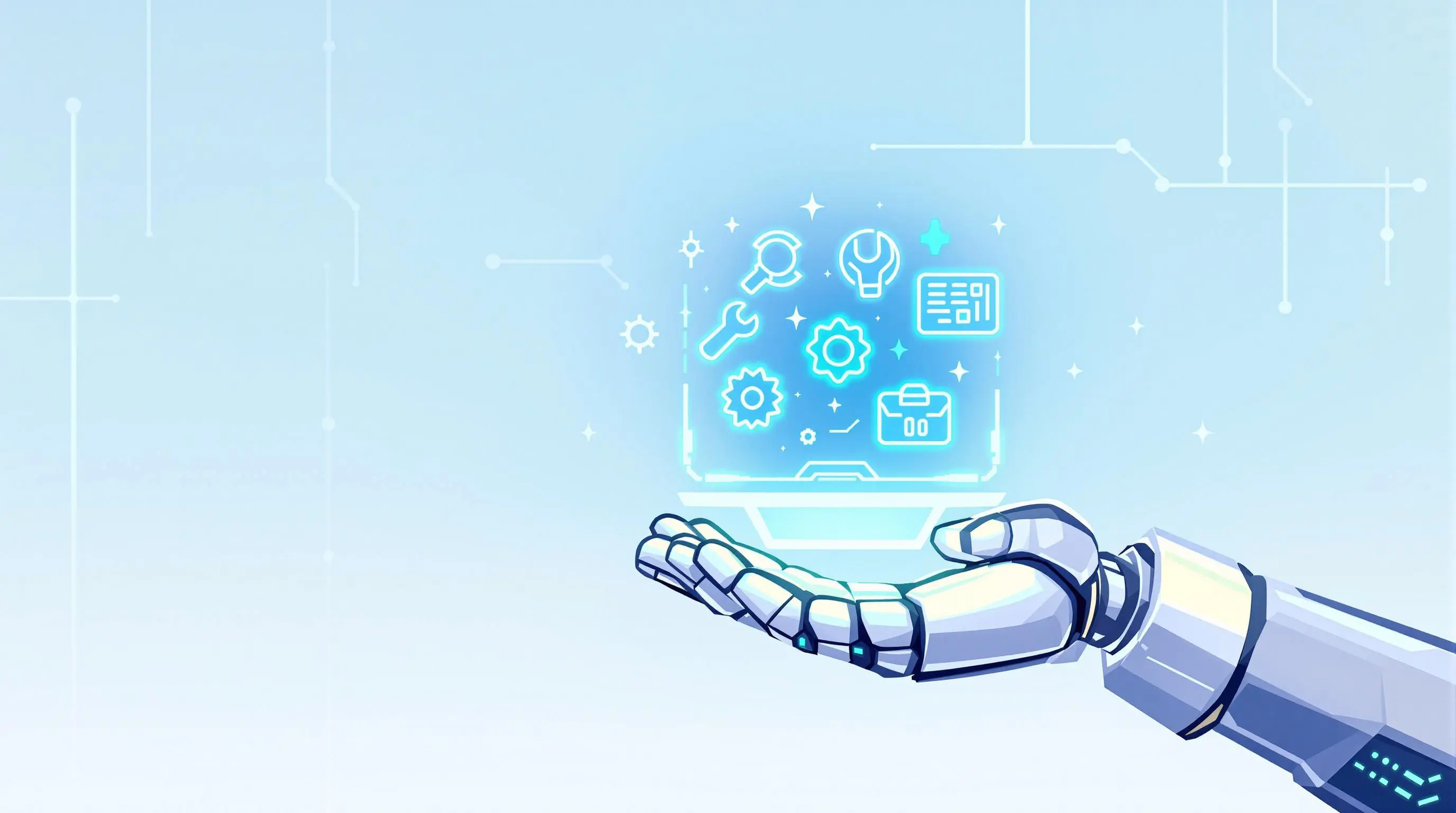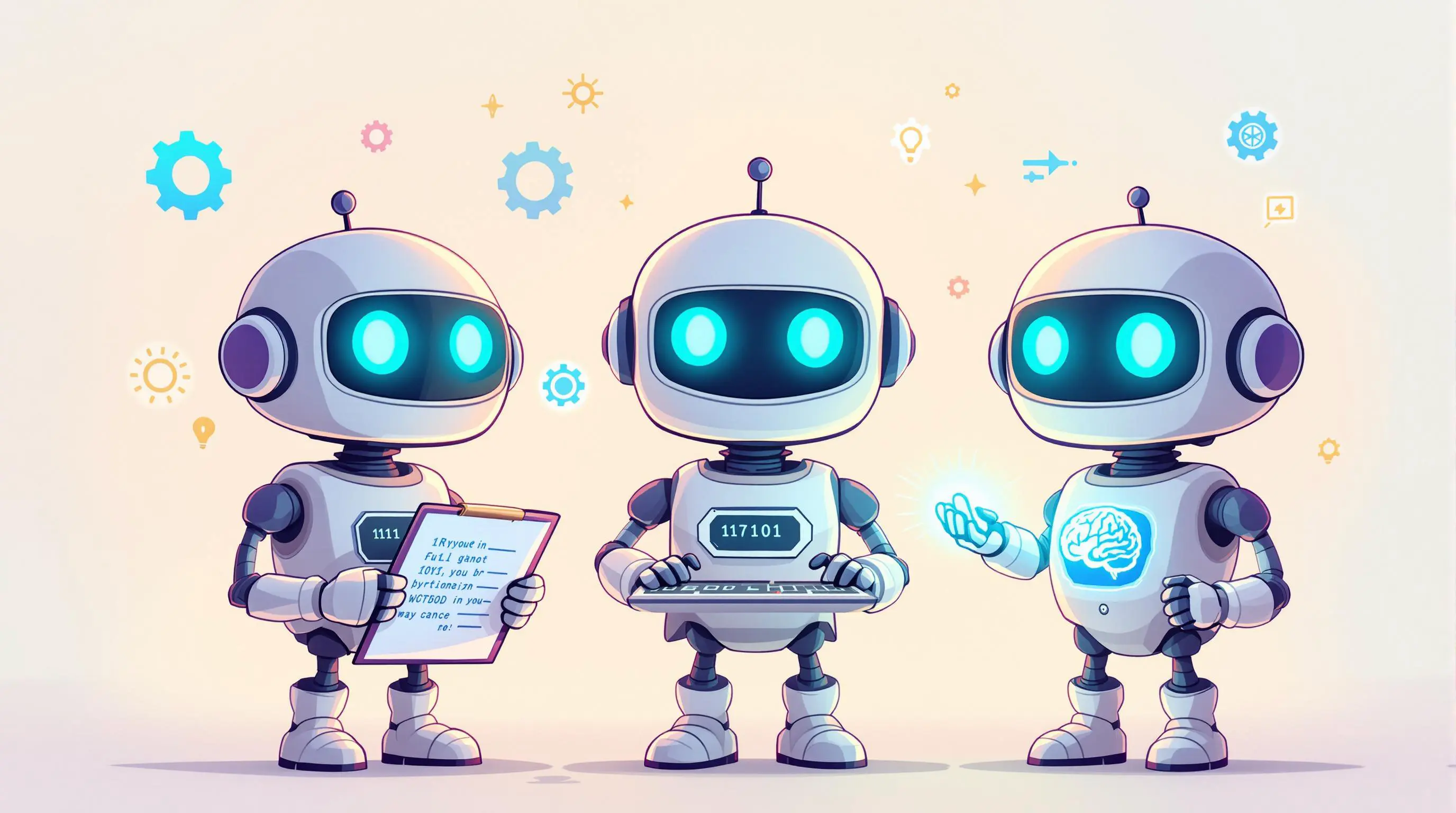Reclaim Your Data: The Power of EU Cloud Services
In the evolving landscape of cloud computing, the reliance on US-based cloud services has become a topic of significant debate. I've observed a growing

It’s no surprise that artificial intelligence continues to dominate headlines, with new breakthroughs, tools, and regulations shaping the way we interact with technology. From transformative innovations in generative AI to critical debates about ethics and regulation, the AI landscape is evolving faster than ever.
Recently, we’ve seen major developments across the board: the EU AI Act is setting new standards for responsible AI use, while companies like OpenAI and emerging players like DeepSeek are pushing the boundaries of what’s possible in the AI race. At the same time, powerful tools are making advanced AI capabilities more accessible than ever.
In this blog, I invite you to dive in with me as we explore the latest trends shaping the AI world. I’ll break down the key developments and share some practical resources to help you stay ahead of the curve.

Starting February 2, 2025, the EU AI Act marks a turning point in how companies develop and deploy AI systems. Its main goal is to ensure that AI is used in safe, transparent, and ethical ways. If you’re a business operating in or impacting Europe, here’s what you really need to know:
Risk-Based Classification AI systems are categorized into four risk levels:
AI Literacy (Article 4) Companies must ensure employees working with AI have:
Governance and Documentation Businesses must:
Transparency Obligations Providers of general-purpose AI models must:
Penalties for Non-Compliance Fines can reach up to €35 million or 7% of global revenue for severe violations, underscoring the importance of adherence.
While the new regulations might seem daunting, they also offer companies a chance to lead in ethical AI development. And if you’re looking to up your team’s AI know-how, check out our upcoming courses for AI/LLM Essentials or AI Software Development!
The AI world is evolving at high speed, with new developments emerging almost daily. Recently, there has been quite some buzz around advanced reasoning models. So let's dive into the latest AI innovations and tools that are making waves in the tech industry.

DeepSeek, a Chinese AI company, has recently taken the Western AI world by storm with its R1 reasoning model. This new AI chatbot has quickly climbed to the top of charts, surpassing established players like OpenAI's ChatGPT o1. What sets DeepSeek apart is its claimed ability to achieve similar reasoning capabilities to American models at a fraction of the cost.
This goes to show:
Not to be outdone, OpenAI also tries to push the boundaries of AI technology with several new offerings in their pipeline:
Just like Claude announced its Computer Use feature for Claude Sonnet 3.5 a while ago, OpenAI's Operator is an AI agent capable of autonomously performing web-based tasks. Built on the Computer-Using Agent (CUA) model, it combines advanced reasoning, vision, and multi-modal technology to navigate digital interfaces. Operator can handle tasks like booking travel, making dinner reservations, and online shopping with a 87% success rate on real websites.
Deep Research is OpenAI's latest AI tool designed for complex, multi-step research tasks. It can search, analyze, and synthesize information from hundreds of online sources to create comprehensive reports in a fraction of the time it would take a human. Deep Research is powered by OpenAI's upcoming o3 model, which is optimized for web browsing and data analysis at a higher speed than the o1 model.
o3-mini is OpenAI's newest addition to its reasoning model series. It's designed to be faster, cheaper, and more accurate than its predecessor o1-mini, with improved performance on STEM tasks, especially coding tasks. o3-mini is now also available in the free version of ChatGPT, making advanced reasoning capabilities accessible to a broader audience.
Google Gemini 2.0 is the latest iteration of Google's advanced AI model, designed for the "agentic era" of artificial intelligence. While iteratively being rolled out, it features enhanced multimodal capabilities, including native image and audio generation, and improved reasoning skills. It also introduces native tool use, allowing direct integration with Google services like Search and Maps. The model is faster and more capable than its predecessors, with a focus on enabling AI agents that can perform complex tasks autonomously under user supervision.
Rounding out the innovation showcase is Moonshot AI’s Kimi k1.5. Launched just days after DeepSeek’s R1, Kimi k1.5 gives users free and unlimited access to advanced AI capabilities. From real-time web search to handling over 50 file types and processing multimodal inputs, Kimi k1.5 is setting new benchmarks — sometimes outperforming competitors by up to 550% on tasks that require logical reasoning.
We can see the world of generative AI is advancing at lightning speed, with next-gen models and features reshaping the landscape frequently. From DeepSeek's budget-friendly R1 model shaking up the industry to OpenAI's cutting-edge tools like Operator and Deep Research, innovation is thriving. Meanwhile, Google's Gemini 2.0 and Moonshot AI's Kimi k1.5 highlight the competition in multimodal AI and autonomous agent capabilities.
These advancements aren't just about pushing technological limits — they're also about making powerful AI tools more accessible to all of us. As this AI revolution continues, the focus is shifting toward practical tools that empower developers and enthusiasts to bring these advanced models into everyday use. In the next step, I'll share some of the most exciting tools that are making it easier than ever to leverage the latest AI innovations.

Ready to integrate these innovations into your own projects? Here are a few tools that can help you harness the power of modern AI:
Ollama is a well established open-source tool that lets you to run large language models locally on your machine. It simplifies the process of downloading, installing, and using various AI models, including the new DeepSeek R1. Ollama is particularly useful and a must-have for those who want to experiment with different AI models without relying on cloud-based services. Check out our blog post about Empowering Local AI with Ollama for more interesting facts.
If you’re excited about building AI-powered projects, LangChain is your go-to framework. Its modular design simplifies working with big language models and managing conversational memory. With features like integration with external data sources and advanced prompt engineering, LangChain enhances AI development, enabling the creation of scalable, dynamic, and sophisticated AI-powered solutions. Want to dive deeper? Check out our blog series on AI for DevOps Engineers.
Accessing different language models can be a hassle. OpenRouter provides a unified interface for accessing various language models, including those from OpenAI, Anthropic, and others. It allows users to find the best models and prices for their specific prompts. OpenRouter is especially useful for developers who want to integrate multiple AI models into their applications without managing separate APIs for each provider. As of now, OpenRouter even offers free hosting options for the DeepSeek R1 model, making it easy to get started with advanced reasoning capabilities.
There are already plenty of GitHub Copilot alternatives for assistance in coding. RooCoder however is an extension for Visual Studio Code that allows developers to choose from different AI providers like OpenAI, Anthropic, or even Ollama for using local models. It can also integrate with OpenRouter, allowing developers to use any supported language model for coding assistance directly within their IDE. This tool enables developers to use the power of various AI models for tasks like code completion, refactoring, and documentation generation.
Google NotebookLM is an innovative AI-powered tool designed to enhance your note-taking and research experience. It allows users to upload documents, such as PDFs and Google Docs, and then generates quick summaries, answers specific questions, and even creates audio overviews of the content. This tool is particularly beneficial for students, researchers, and professionals looking to streamline their information processing. NotebookLM effectively grounds its responses in the uploaded materials, ensuring personalized insights and context-aware assistance.
Lecca.io is a no-code platform that encourages users to build and deploy custom AI agents and automate workflows effortlessly. It combines autonomous AI capabilities with traditional workflow automation, enabling users to create intelligent solutions without any programming knowledge. Lecca.io supports integration with multiple AI providers and offers built-in retrieval-augmented generation (RAG) features. This platform is ideal for businesses seeking to enhance productivity through automation in areas such as customer support, sales processes, and data analysis while retaining options for human oversight.
Keep in mind that the AI landscape is constantly evolving, with new tools and models emerging regularly. With these resources, you can start to explore the latest AI innovations and leverage advanced capabilities to enhance your projects and workflows. Whether you're a developer, researcher, or enthusiast, these tools offer exciting opportunities to engage with cutting-edge AI technology. However, as new tools and models are released, it's essential to stay informed and adapt to the changing AI landscape. If you want to be updated on the latest AI trends and tools, make sure to check out our blogs and courses on our website.
As we continue into 2025, the AI landscape is set to change even more rapidly. Here are a few trends you won’t want to miss:
RAG is a powerful AI technique that combines information retrieval with generative models to enhance content creation and understanding. Some of the exciting new approaches include:

With the goal of reaching Artificial General Intelligence (AGI), AI agents are beginning to work alongside us in more dynamic ways:
With AI agents gaining more ground, specialized browsers like Browserbase are emerging. These are designed to let AI agents interact with the web in a more human-like, intuitive way — perfect for effective web automation and smarter information retrieval.
As we progress through 2025, these trends are likely to accelerate the integration of AI into various aspects of our lives and work, reshaping industries and opening up new possibilities for innovation and efficiency.
AI is transforming our lives at a pace that’s hard to keep up with — but in the best way possible. Whether it’s the new regulations of the EU AI Act, encouraging responsible AI use, or breakthrough tools like DeepSeek’s R1 and OpenAI’s new offerings, the AI revolution is making technology more innovative and accessible than ever before. As we look to the future, trends like advanced RAG techniques, smarter and more integrated AI agents, and specialized browsers are paving the way for even more exciting developments in 2025.
Stay tuned for more updates on these trends, and if you’re eager to keep up with the latest in AI, be sure to explore our blogs and courses on our website.
Happy exploring!
You are interested in our courses or you simply have a question that needs answering? You can contact us at anytime! We will do our best to answer all your questions.
Contact us